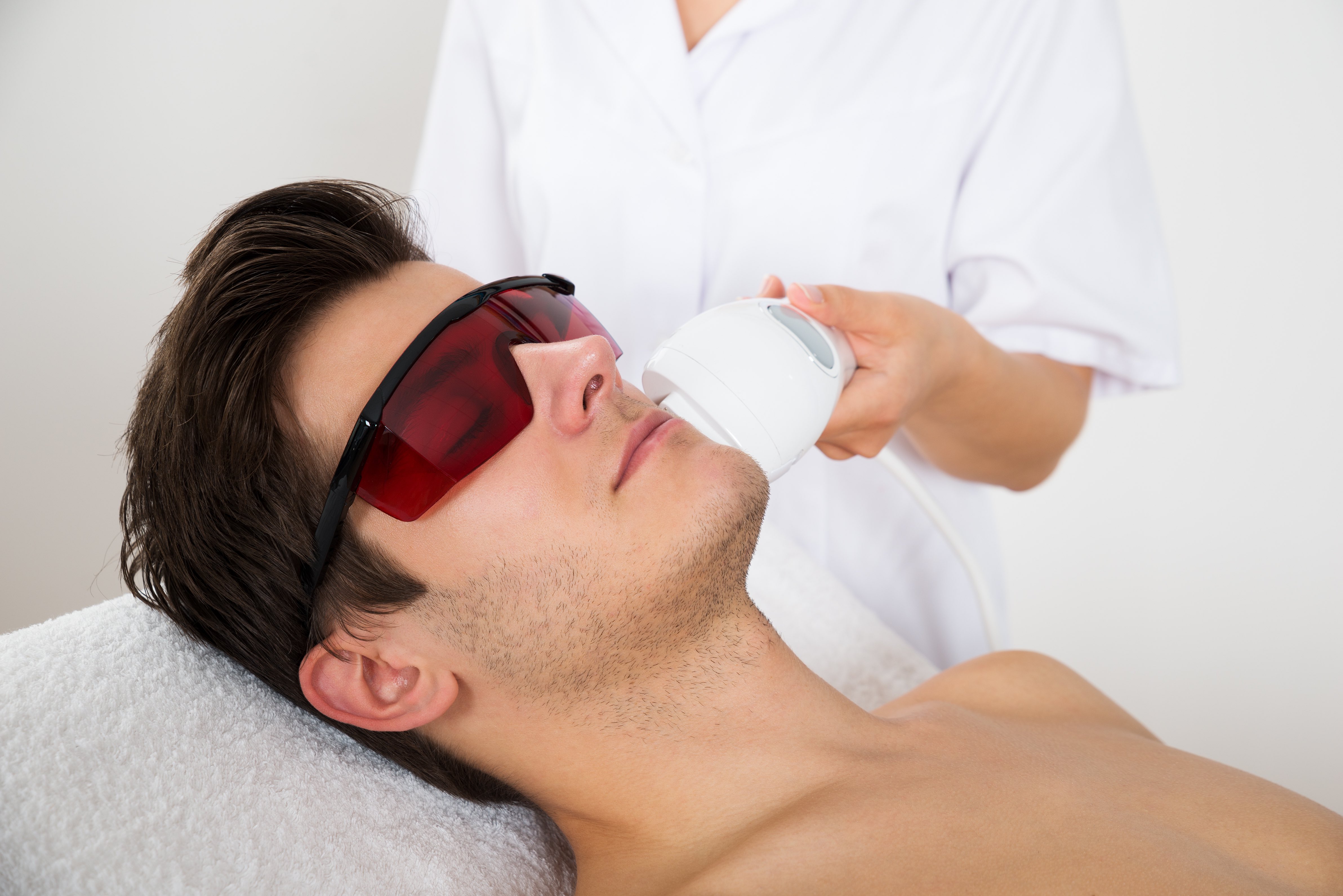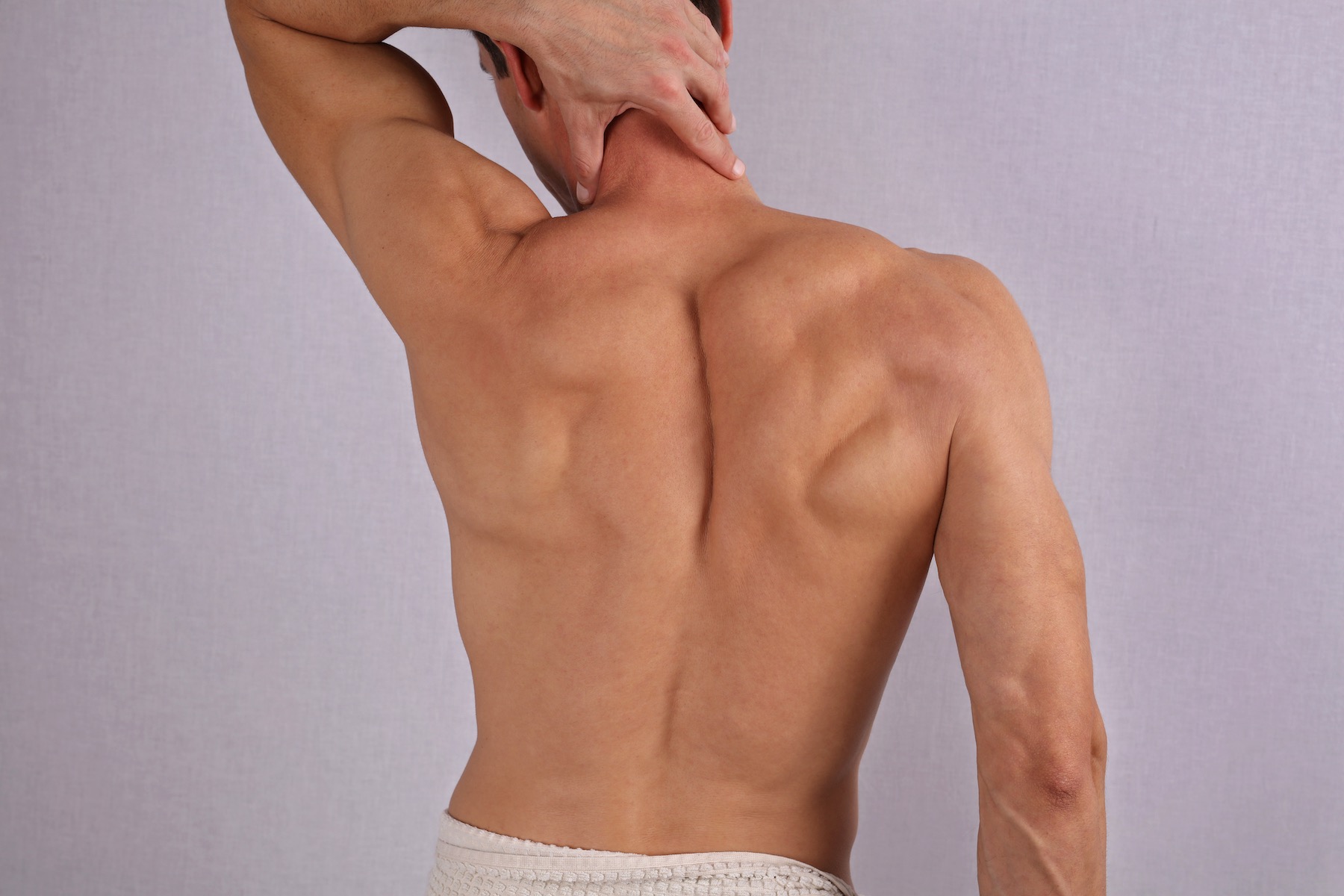How to market your laser hair-removal services to men

With more men going for the hair-free look, the opportunity for salons to cash in on this trend has never been greater. In aid of National Men's Grooming Day (August 16), we explain how to market your laser hair-removal services to the male market.
Whereas growing a crop of thick chest hair was once a sign of “becoming a man”, the male body ideal is now decidedly less hirsute. More than ever, men are being assailed with images of male celebrities sporting gleamingly hairless bodies, with Love Island stars such as Wes Nelson and Adam Collard renowned for showing off their silky-smooth torsos.
In fact, a recent report by industry analyst Mintel showed that 46% of British men aged 16-24 removed hair from their bodies in 2018, up from just over a third (36%) two years earlier. The study also revealed that 57% waxed or lasered their pubic area in 2018, compared to 40% previously, while 42% of males removed hair from their underarms, up from 16%, and the number of guys removing hair from the chest doubled from 15% to 30%.
Interestingly, the research also highlighted that men aged 16-24 are removing body hair almost as much as young women of the same age, with similar proportions of both (29% of men versus 34% of women) removing hair more frequently in the past 12 months.
Why invest in laser hair removal services for men?
With male hair in general thicker and coarser, increased pain levels and the possibility of ingrown hairs are more likely for men waxing and shaving than they are with women, making laser or IPL a very viable option.
“Male laser and IPL hair removal treatments are becoming increasingly popular to minimise hair reduction, reduce ingrowing hairs and decrease maintenance,” says Dr Samantha Hills, clinical director at Lynton Lasers.
“Our clinics across the UK have seen a surge in demand from male clients requesting laser or IPL hair removal in 2018. An average of 17% of clinic patients are male. Laser and IPL successfully achieves between 60 – 95% reduction from an average of six hair removal sessions. Popular treatment areas for men include the face, chest, underarms, lower back or the pubic region.”

What are the training requirements?
Phoebe Cowley, marketing and events manager at 3D-lipo, which supplies the 3D-Trilogy Ice laser hair removal machine, says no extra training or special treatment protocol is needed for businesses expanding their laser hair removal services to include the male market.
“With laser, we always have to work on colour, so we need some pigment in the hair whether it is male or female,” she says. “There is no difference between male and female in terms of the structure or growth patterns but a male will generally have more follicles per square centimetre than a female, so they will have more hair.
There are no differences in treatment protocols because all the follicles work in the same way and each growth pattern is similar whether it’s male or female.
“There are three different cycles of hair growth: anagen, catagen and telogen. Men and women go through the same cycle so as far as treating and getting results you still have to follow the same process. It’s always recommended to do a course of sessions, generally monthly, to get the best results for both men and women.”
In fact, Cowley says treating men can sometimes be simpler and more effective than treating hirsute females. “Another difference is that with female hair, although it is normally a cosmetic hair growth that you’re treating, it could also be hair hormonal growth, whereas gents don’t really have hormonal hair growth. So potentially, it would actually be easier to treat men.”
What types of treatments are trending?
The Mintel statistics further indicate that the hipster beard trend shows no evidence of waning, with 44% of men claiming to have some stubble, 20% a closely trimmed beard and 7% a thick, full beard. Yet keeping facial hair well groomed via shaving or waxing can be a painful experience for men when compared to using the newest, virtually pain-free lasers or IPL technologies.
Hills says: “The increased number of male clients in our clinics are predominantly requesting treatment to shape their beards but also to help prevent the incidence of ingrowing hairs on the face, neck and jawline areas,” she says. “The newer laser technologies allow for quicker and less painful treatments, perfect for male clients.”
How to market your services to men?
To successfully attract male clients, it is important to consider revising your marketing strategies, ensuring promotional material is suitably targeted to them.
Creating dedicated treatment brochures or menus showing images of men rather than women, and giving clear treatment prices for the areas typically required by men such as the back or beard area is advisable.
Dr Ian Hallam, director of the Smart Group, which supplies the Cosmedico laser range and the Hair No More concept, says: “Clinics that are successfully marketing treatments to male clients are doing so via dedicated male treatment price lists, advertising treatments with names such as the Brokini and Brozillian.”
To grasp the attention of males, Hallam suggests hosting male-only events at your salon, spa or clinic. “This allows men to come along, see a treatment in action and ask questions in a non-threatening environment.”
With the trend for smooth skin showing no sign of abating, and considering that no expenditure on additional training is needed, slotting male treatments into your existing laser services could be a simple and inexpensive route to profit.



